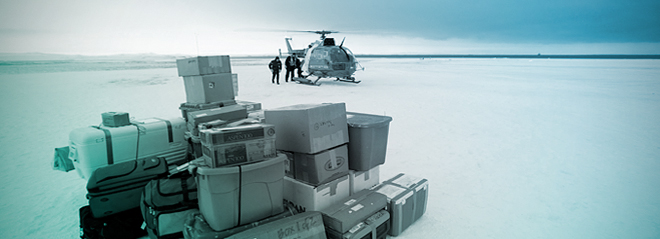|
|

|
|

|
|

|
|

Snow forms an insulating layer that limits gound cooling in the winter. Therefore, the amount of snow, but also its thermal conductivity, will determine the efficiency of this insulation. The thermal conductivity of snow keff is defined as q=-keff dT/dz, where q is the heat flux and dT/dz is the temperature gradient. Values of keff range from 0.025 to 0.65 W m-1 K-1, and this large range shows that snow physical properties can dramatically affect ground cooling and permafrost thawing or preservation. To illustrate the fact that snow physical properties are highly variable, please look at the pictures below:
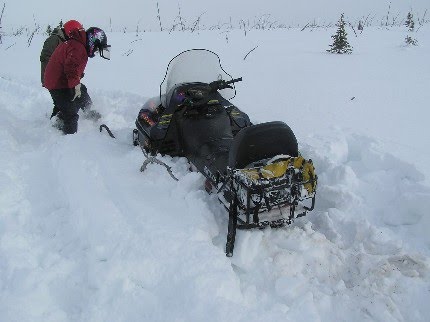
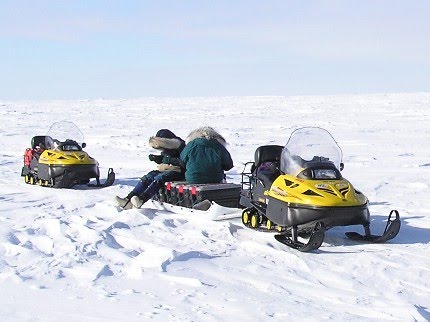
Here on the left, in the taiga, the snow is entireley made up of depth hoar crystals with little cohesion. These inexperienced snowmobilers imprudently went off track, a very bad idea. Now their machine is stuck in the soft depth hoar and it will require some back pain to get the vehicle back on track.
Here on the right, on the tundra, these no more experienced snowmobilers have no trouble staying on top of their stuff. If they're not sinking in, it is not because of their (limited) skills, but because the tundra snowpack is mostly made up of hard wind slabs that easily supports the weight of their machines.
Conclusion: snow structures on the tundra and taiga are very different. Now, snow thermal conductivity and mechanical properties are well correlated (see this paper for details) because heat trransfer in snow takes places mostly through the interconnected network of ice crystals. Therefore, snow on the taiga is a much better thermal insulator than on the tundra.
To further convince you of the differences in structure between tundra and taiga snow, please look at the photomicrographs below:
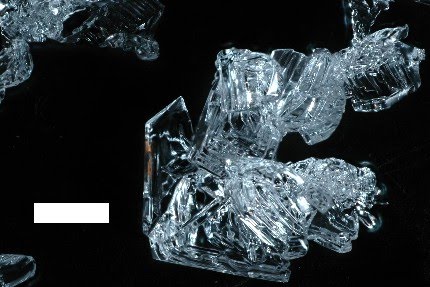
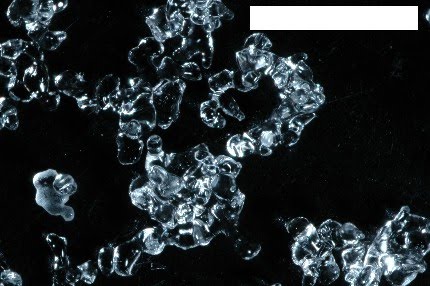
On the left, large depth hoar crystals from the taiga. The connections between crystal or clusters of crystals are thin and weak. Heat therefore does not flow efficiently within the ice network. Also, snow made of such crystals has low mechanical resistance.
On the right, small rounded grains packed together and sintered by wind form most of the tundra snowpacks. Heat flows more efficiently in this type of snow. You can also ride your snowmobile on it without sinking in. White scale bars: 1 mm.
Now, how do snow properties affect ground temperature and permafrost degradation or preservation, in the current climate change context ? Most large scale models do not account for spatial variations of snow thermal conductivity in their calculations of permafrost thermal regime. We used a land surface model to investigate the effect of spatial variations of snow thermal conductivity on ground temperature. The result is striking: if actual measured snow thermal conductivity values are used instead of a uniform value, ground temperatures are up to 12°C warmer in winter and 4°C warmer in summer.
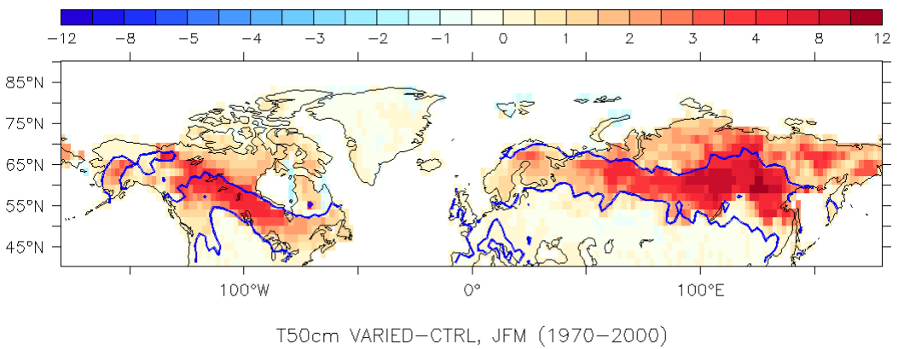
This is in winter (January-February-March): ground temperatures at 50 cm depth are 12°C warmer in central Siberia if we use keff =0.07 W m-1 K-1, as measured, rather than the more commonly used value of 0.2 W m-1 K-1. The blue line is the limit of the taiga.
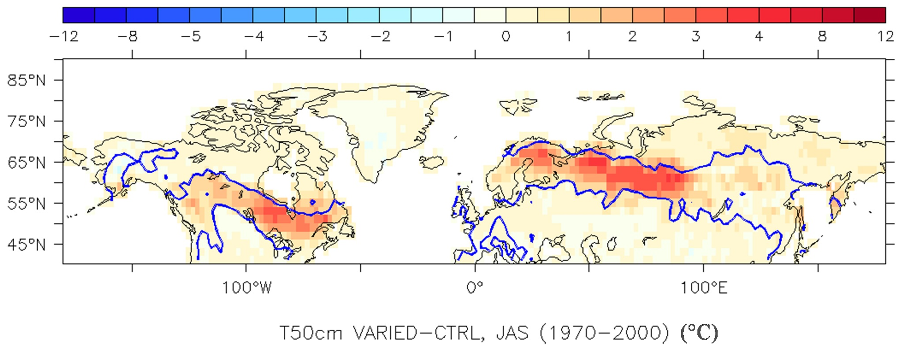
Conclusion: with global warming, vegetation will grow more and the taiga-tundra boundary will shift northward. The conductive tundra windslabs will be replaced by insulating depth hoar. This will prevent winter ground cooling and hasten permafrost thawing. Organic matter stored in permafrost for millenia will become exposed to microbial mineralization, and parts of it will be released to the atmosphere as CO2 and CH4. This in turn will accelerate global warming. We therefore have another positive feedback loop between climate, vegetation, snow and permafrost. Global warming may be faster than expected. This may remind some that Arctic sea ice loss is more rapid than the most pessimistic predictions because we do not understand some of the complex feedbacks between sea ice and climate. Here again, warming may be faster that the worst predictions because we fail to include all feedbacks in our predictions. We may soon realize that acting against global warming is more urgent than we think.

